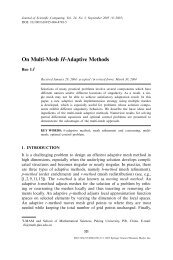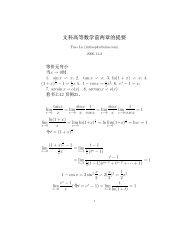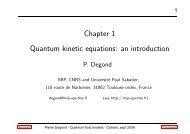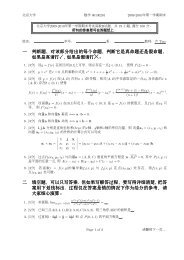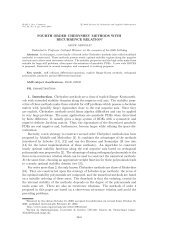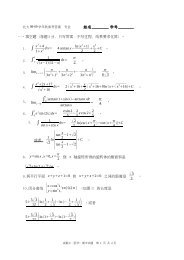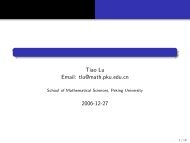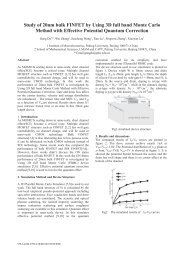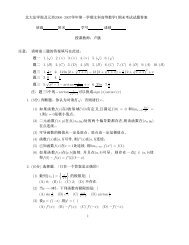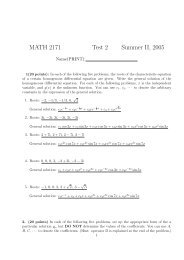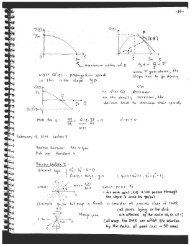Abstract
Abstract
Abstract
You also want an ePaper? Increase the reach of your titles
YUMPU automatically turns print PDFs into web optimized ePapers that Google loves.
CHAPTER 1. OVERVIEW 8<br />
for predicting the actions of objects that are of moderate size (that is, objects that<br />
are not as large as galaxies but are not as small as atoms).<br />
Quantum mechanics, though, is a probabilistic description of nature. The fun-<br />
damental idea of quantum mechanics is that matter exhibits a wave-particle duality.<br />
This means matter acts in some respects as both a particle and a wave. For a particle<br />
in classical mechanics, we can describe its instantaneous state by giving its position<br />
and velocity. In quantum mechanics [26],[23], to describe a particle’s instantaneous<br />
state, we need an object called a wavefunction. We will now list some postulates of<br />
quantum mechanics. For these postulates, we are considering just a single particle<br />
and not a system of particles, and these particles are confined to move in one space<br />
dimension. These postulates can be easily extended to a more general case:<br />
1. The quantum state of a particle is described by a wavefunction ψ(x) whichis<br />
an element of the complex Hilbert space L 2 . A physical interpretation of the<br />
wavefunction is as probability distribution, where the probability of finding a<br />
particle in a region dx about the point x is given by |ψ(x)| 2 dx. Since the particle<br />
must exist somewhere in (−∞, ∞), this imposes the normalization condition<br />
that ∞<br />
−∞ |ψ(x)|2 dx =1.<br />
2. Every physical observable quantity has a linear, Hermitian operator associated<br />
with it. Further, for a given operator Θ, we can calculate its expected value




